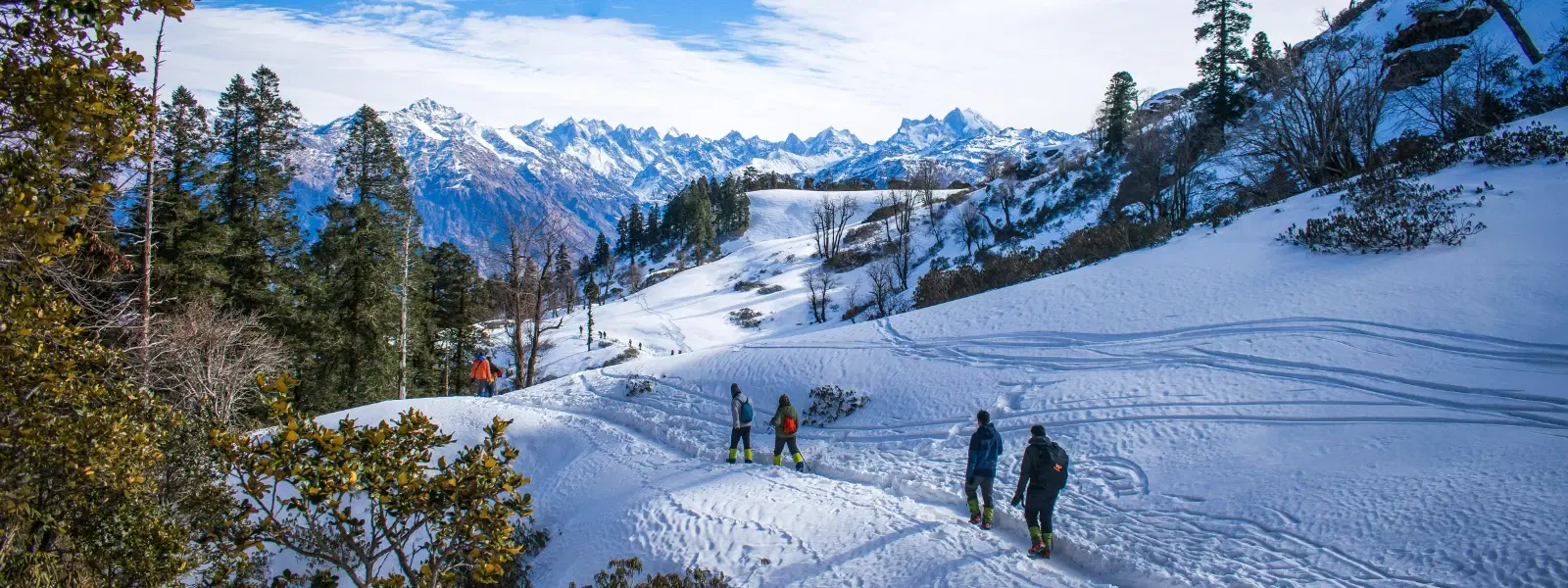
Hotels
•04 min read

Surrender yourself to a world where the mighty Kanchenjunga looms large against a canvas of endless blue skies and rugged Himalayan terrain. As the third-highest mountain in the world, Kanchenjunga beckons trekkers with its awe-inspiring beauty and promise of adventure. This blog post offers expert insights into the Kanchenjunga Base Camp trek, detailing the routes, mesmerizing views, day-by-day itineraries, and challenges that make this journey one of the most scenic and rewarding high-altitude treks in India.
Kanchenjunga is not only a towering peak but also a symbol of cultural and natural heritage in Sikkim. As the third-highest mountain on earth, its snow-capped peaks and jagged ridges offer a view that is both humbling and exhilarating. Trekkers are mesmerized by the ever-changing panorama of the Kanchenjunga mountain views, which provide unique glimpses into the grandeur of the Himalayas.
Sikkim stands out among Himalayan destinations for its pristine landscapes and diverse trekking routes. Beyond the breathtaking views, this state offers an immersive experience where nature, spirituality, and adventure converge. The Kanchenjunga Base Camp trek, a distinguished part of Sikkim Himalayan treks, distinguishes itself by combining both challenging terrain and the serenity of high-altitude wilderness.
The journey to Kanchenjunga Base Camp unfolds along a series of well-marked routes that start from charming villages like Yuksom. As you traverse the trails, key landmarks such as Dzongri, Lamuney, and Tshoka punctuate the path and serve as crucial waypoints on the trek. These stops not only offer rest but also provide breathtaking vistas of the surrounding mountains, reinforcing the allure of this Himalayan adventure trekking experience.
A typical itinerary is carefully designed to balance trekking with necessary acclimatization. Over the course of 10-12 days, trekkers gradually gain altitude with designated rest stops to prevent altitude sickness. Each day’s journey covers manageable distances, culminating in long stretches of scenic trails that immerse you in the rugged beauty of the region. Understanding the importance of acclimatization and preparation is key to successfully completing these high-altitude treks in India.

The Kanchenjunga Base Camp trek is renowned for its stunning, panoramic mountain views. As you approach key vantage points along the route, you will be greeted by the soaring peaks of Kanchenjunga and its neighboring summits. Locations such as Dzongri and Goecha La are celebrated for offering some of the best opportunities to indulge in scenic treks in Sikkim, where every turn of the path reveals a fresh, breathtaking perspective.
Beyond sheer natural beauty, trekking in Sikkim is a culturally enriching experience. Interaction with local communities provides insights into age-old traditions and the harmonious relationship between the people and their environment. The trails are often flanked by rare Himalayan flora and fauna, adding layers of fascination to your journey. This blend of cultural immersion and natural wonders makes every step of the trek memorable.
The Kanchenjunga Base Camp trek is a moderately challenging expedition, demanding both physical endurance and mental stamina. To truly enjoy and complete the trek, a good level of fitness is essential. Visitors are advised to engage in regular cardiovascular training and strength exercises. Detailed preparation, including understanding the terrain and weather patterns, can contribute significantly to a successful high-altitude experience.
Preparation goes beyond physical fitness. Essential gear such as trekking poles, water-resistant clothing, and proper hiking boots are crucial. It is also important to pack sufficient layers for varying temperatures and unpredictable weather. Equally vital is the knowledge of managing altitude sickness—a common challenge on high-altitude treks.
Did you know? Proper acclimatization and hydration are key to avoiding altitude sickness during the Kanchenjunga Base Camp trek. Experts recommend ascending slowly and taking rest days to allow your body to adjust to the altitude.
Getting to the starting point of the trek is relatively straightforward if you plan ahead. Major cities like Delhi, Mumbai, and Kolkata offer several transportation options that will take you to Sikkim. Once in Sikkim, travelers typically make their way to Yuksom by road, a gateway town to the Kanchenjunga Base Camp trek. In addition, necessary permits can be arranged either locally through authorized agencies or with the help of experienced local guides.

The overall cost of the Kanchenjunga Base Camp trek depends on factors like permits, guides, and basic accommodation along the route. While it is possible to manage the trek on a budget, the experience is enriched by opting for premium services when required. The best times for undertaking this Himalayan adventure trekking journey are during the clear months of spring and autumn. These seasons promise ideal weather conditions and enhanced trail accessibility.
The trek is considered moderately difficult, requiring good physical fitness and some trekking experience.
The trek typically takes 10-12 days, allowing for gradual acclimatization and rest stops.
Due to its high altitude and rugged terrain, the Kanchenjunga Base Camp trek is among the most challenging in the region.
The trek starts from Yuksom, a town accessible by road from Gangtok or Siliguri.
The base camp is situated at an altitude of approximately 5,143 meters (16,873 feet).
The Kanchenjunga Base Camp trek offers more than just a physical challenge—it is an invitation to encounter the raw beauty of the Himalayas, experience the rich cultural tapestry of Sikkim, and push your limits in one of the world's most breathtaking landscapes. With its panoramic mountain views and array of trekking routes, this journey stands out as a quintessential Himalayan adventure trekking experience. For anyone seeking a combination of scenic beauty, cultural immersion, and physical exhilaration, this trek remains a must-do expedition in India.